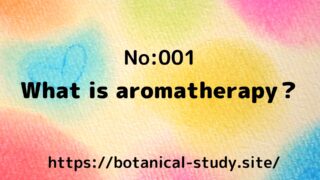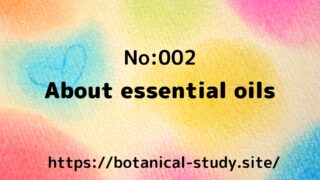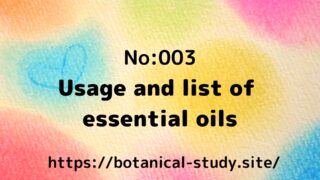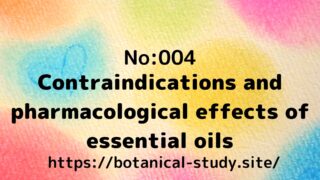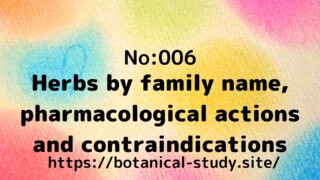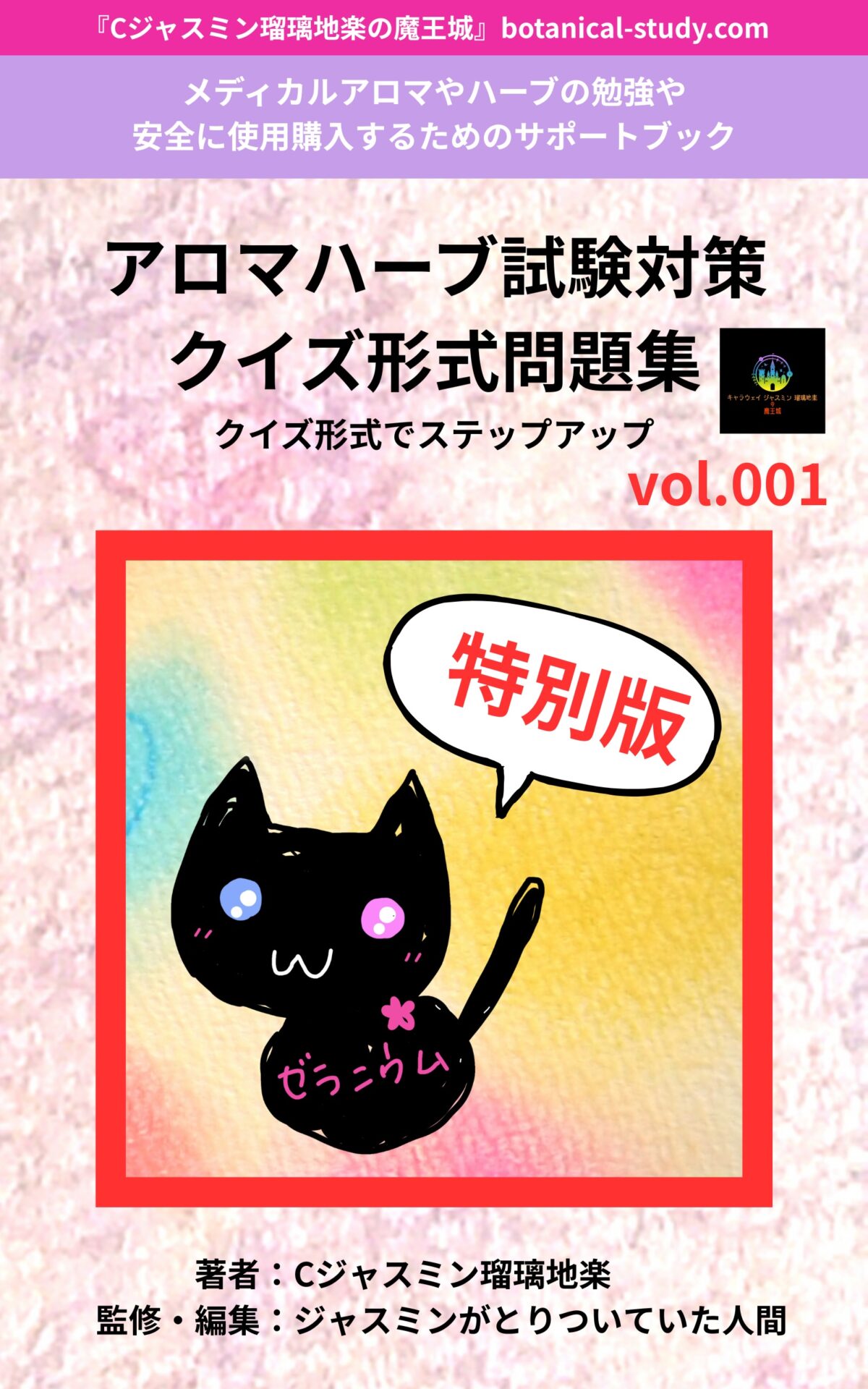5:Herbs and phytochemicals taught by C. Jasmine Rurichira and Assistant Geranium

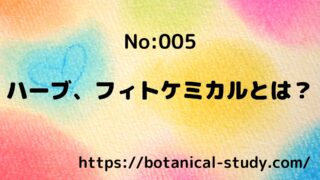
- Alternative therapy, naturopathy (natural therapy), and holistic
- What are herbs?
- Herbs, spices, and aromatherapy
- How do herbs impact the mind and body?
- What should I learn to enjoy using herbs?
- Let’s understand the basics of how herbs impact us
- Key Points to Identify High-Quality, High-Functionality Herbs
- Main Methods of Extracting Phytochemical Components and Main Bases
- What are some common phytochemicals?
- Both herbs and aromatherapy should be used based on personal responsibility
Alternative therapy, naturopathy (natural therapy), and holistic
Herbs are considered to be both a plant-based alternative therapy and naturopathy (natural therapy).
Naturopathy aims to enhance the body’s natural healing ability and maintain normal body functions by addressing not only specific illnesses but also considering the perspectives of Body‐Mind‐Spirit. It focuses on the immune, endocrine, and nervous systems, as well as homeostasis (homoeostasis).
Moreover, holistic thinking, which encompasses not only these systems but also the environment in which the body and mind reside, is considered to approach health, longevity, and quality of life (QOL) from a comprehensive, inclusive perspective. This is known as Holistic Medicine.

Aromatherapy is also adept at working on homeostasis!
Body (physical), Mind (mental), Spirit (spiritual)!
It has long been said to help balance both the mind and body!

Aromatherapy, herbs, and other alternative therapies are deeply connected with integrative medicine, holistic approaches, and holistic medicine in modern times!
What are herbs?
Fresh herbs, dried herbs, and medicinal herbs—all trace their origins back to plants.
Since ancient times, humans have harvested plants from their surroundings and experimented with various uses, leading to the modern era.
In ancient Egypt, plants were used in prayers and spells for healing illnesses, and sacrifices were common. Later, plants were used not only for food and ornamental purposes but also for medicine, cosmetics, perfumes, and dyes.
In recent years, plants have been utilized as raw materials for pharmaceuticals used in Western medicine.

The synergistic effects of the various components within a single herb and its benefits for a wide range of symptoms are widely recognized. Herbs have been traditionally used for such purposes.
However, the precise pharmacological effects of a single herb on specific diseases remain unclear, partly because it is challenging to ingest a large quantity of a single herb at one time to understand its effects. Therefore, it is said that the pharmacological effects are not fully understood and are still under research.

The difference between ‘herbs’ and ‘medicinal herbs’ is often described as follows: When used in appropriate amounts for enjoyment, such as in tea, they are considered herbs. When used with a specific purpose for maintaining health or addressing physical and mental symptoms, especially those with pharmacological effects, they are referred to as medicinal herbs.
Herbs, spices, and aromatherapy
Herbs and spices are often considered to be the same due to their similar usage, and there is no clear distinction between them. However, green plants that grow in temperate regions are called herbs, while black, red, brown, or other colors that grow in tropical regions are called spices. Additionally, mild-flavored plants are often referred to as herbs, whereas those with unique or pungent flavors are commonly called spices.

Aromatherapy essential oils are a collection of aromatic molecules extracted from plants!
There are also herbs that contain essential oil components.
How do herbs impact the mind and body?
Food travels through the digestive tract from the mouth to the anus, and anything not absorbed by the body is excreted. Herbs are classified as ‘food,’ but some herbs and medicinal herbs have pharmacological effects, so they are said to be excreted through drug metabolism routes.
★Food Process: Digestion → Absorption → Metabolism → Excretion
“Oral Cavity” → “Esophagus” → “Stomach” → “Small Intestine” → “Large Intestine” → “Anus” → Outside the Body
- Water-soluble vitamins: Intestinal Capillaries → Portal Vein → Liver → Vein → Heart → Entire Body
- Fat-soluble vitamins: Small Intestine → Lymphatic Vessels → Thoracic Duct → Vein → Heart → Entire Body
★Drug Metabolism Route: Digestion → Absorption → Distribution → Metabolism → Excretion
“Oral Cavity” → .. → “Small Intestine” → “Liver” → “Liver” → “Kidneys” or “Large Intestine” → Outside the Body
★Urinary Tract
“Abdominal Aorta” → “Renal Artery” → “Bowman’s Capsule” → “Renal Tubule” → “Loop of Henle” → “Collecting Duct” → “Bladder” → “Urethra” → Outside the Body

Homeostasis is involved in various metabolic processes!
Aromatherapy is also closely related to the body’s mechanisms!

Detoxing through hydration and urination is also important!
What should I learn to enjoy using herbs?
Similar to essential oils, the ‘scientific name,’ ‘family name,’ and ‘part used’ are important, but herbs are considered ‘useful plants.’
It is also important to understand the ‘main components,’ ‘effects,’ and ‘applications,’ including ‘phytochemical components.

Phytochemical components are found in plants and often have antioxidant effects due to their color, taste, and aroma. They are said to have various gentle, synergistic functions.

Of course, it is also important to understand contraindications and precautions!
Let’s understand the basics of how herbs impact us
Herbs can have harmful effects, so it is important to be cautious about their usage methods.
- Even when the same person uses the same herb, the effect may vary depending on their physical condition.
- Some people should avoid certain herbs due to contraindications.
- Each aromatic component contained in herbs has its unique effects.
- The degree of impact can vary from person to person, even when using the same herb.
- Any herb that has deteriorated can have harmful effects on the human body.
Key Points to Identify High-Quality, High-Functionality Herbs
While it is important to include the ‘scientific name,’ ‘country of origin,’ and ‘expiration date,’ herbs and medicinal herbs are now required to display ‘nutritional information’ as per the ‘Food Labeling Act,’ much like the mandatory ‘full ingredient disclosure’ for cosmetics.
Displaying the ‘specified components of the Food Sanitation Act’ and ‘additional content to be included in food labeling for products containing specified components’ provides extra reassurance.

The presence or absence of organic labeling can also serve as a guideline!
(Even if produced under conditions equivalent to organic, due to the producer’s intentions, the organic application may not be submitted, resulting in the absence of certification marks.)

Although herbs are classified as ‘food,’ there are uses beyond consumption.
Learning about organic practices and using different herbs based on quality, usage methods, and purposes is also one approach.
Main Methods of Extracting Phytochemical Components and Main Bases
- Main Methods of Extracting Phytochemical Components and Main Bases
- For Water-Soluble Components as ‘Herbal Tea’: Base – Water or Hot Water
- For Fat-Soluble Components as ‘Infused Oil’: Base – Vegetable Oil or Edible Oil
- For Both Water-Soluble and Fat-Soluble Components as ‘Herbal Tincture’: Base – Alcohol
- For ‘Herbal Cordial (Syrup)’: Base – Water, Sugar, Lemon Juice
- For ‘Herbal Honey’: Base – Honey
- For ‘Herbal Vinegar’: Base – Vinegar
- For ‘Herbal Powder’: Base – Powdered Form

“Essential oils” are also referred to as “phytochemical components.”
I’d be happy to help with more translations or any other questions you have about aromatherapy!
What are some common phytochemicals?
Phytochemical components are said to be broadly classified into five categories.
- Terpenoids (Terpene-based): Limonene (Citrus), Menthol (Mint), etc.
- Carotenoids: Lycopene (Tomato), β-Carotene (Carrot), etc.
- Polyphenols: Anthocyanin Pigments (Blueberry), etc.
- Sulfur Compounds: Isothiocyanate (Wasabi, Radish), etc.
- Polysaccharides: β-Glucan (Mushrooms), Inulin (Burdock), etc.

Terpenoids are also found in the chemistry of aromatherapy and herbs.
Isothiocyanates are known for their pungent components, cancer-fighting properties, and immune-boosting effects.
Each component is said to have various effects on both the mind and body.

The above-mentioned components and food names are just examples; there are many more.
It is a deep topic that is related to diet, so I think it would be fun to investigate further!
For those with pre-existing conditions or who are taking medications, it is safer to research widely or consult with doctors or specialists.
Both herbs and aromatherapy should be used based on personal responsibility
- There are many similar products, but let’s use high-quality herbs.
- Use herbs according to your physical condition and monitor their effects. It’s safer to refer to specialized books and research before using them.
- Check the production date and expiration date from the time of manufacture and opening, as herbs deteriorate over time. Deteriorated herbs can have adverse effects on the mind and body.
- Store herbs in a cool, dark place after opening to avoid exposure to direct sunlight.
- Be cautious if you are pregnant, breastfeeding, or have infants.
- People undergoing treatment, taking medication, or with pre-existing conditions may have contraindications. Herbs can cause unintended adverse effects on the mind and body, so confirm their safety if you have any of these conditions.
- Essential oils are considered miscellaneous goods in Japan, and herbs are treated as food, but they have pharmacological effects. Consulting with experts, doctors, or pharmacists can make their use safer.
- Be careful of interactions between essential oils or herbs and medications if you are taking any. The use of herbs and similar products is based on the principle of personal responsibility. Be aware of both beneficial and adverse effects (contraindications and precautions). Follow the usage instructions, dosage, and duration of use.

Aromatherapy and herbs must also pay attention to the ‘Product Liability Law.’
Handmade cosmetics are created for personal enjoyment and should not be sold as products to third parties.

